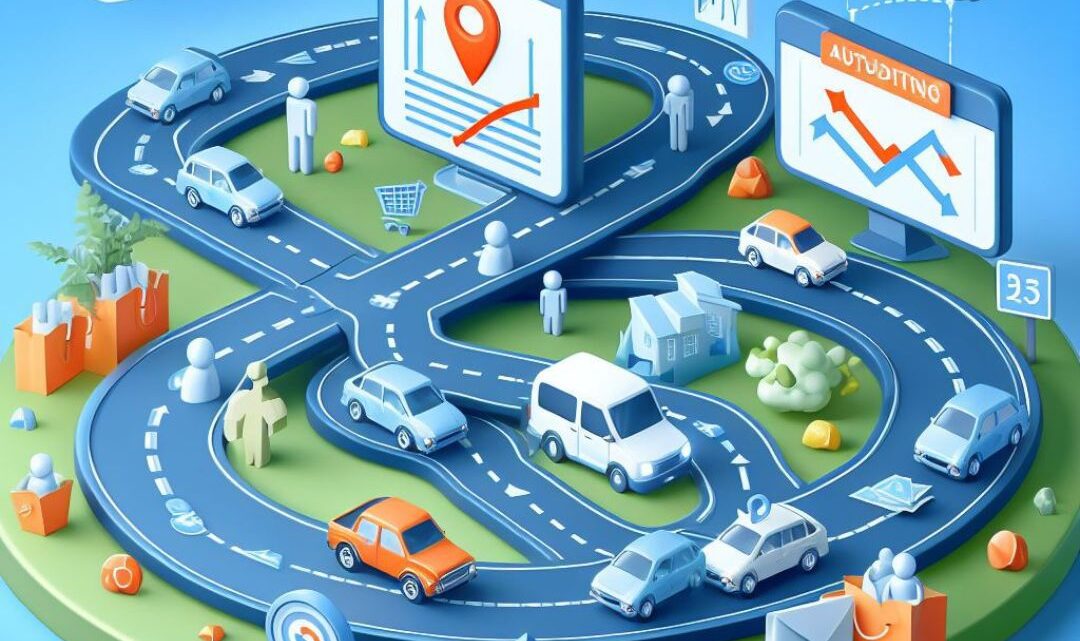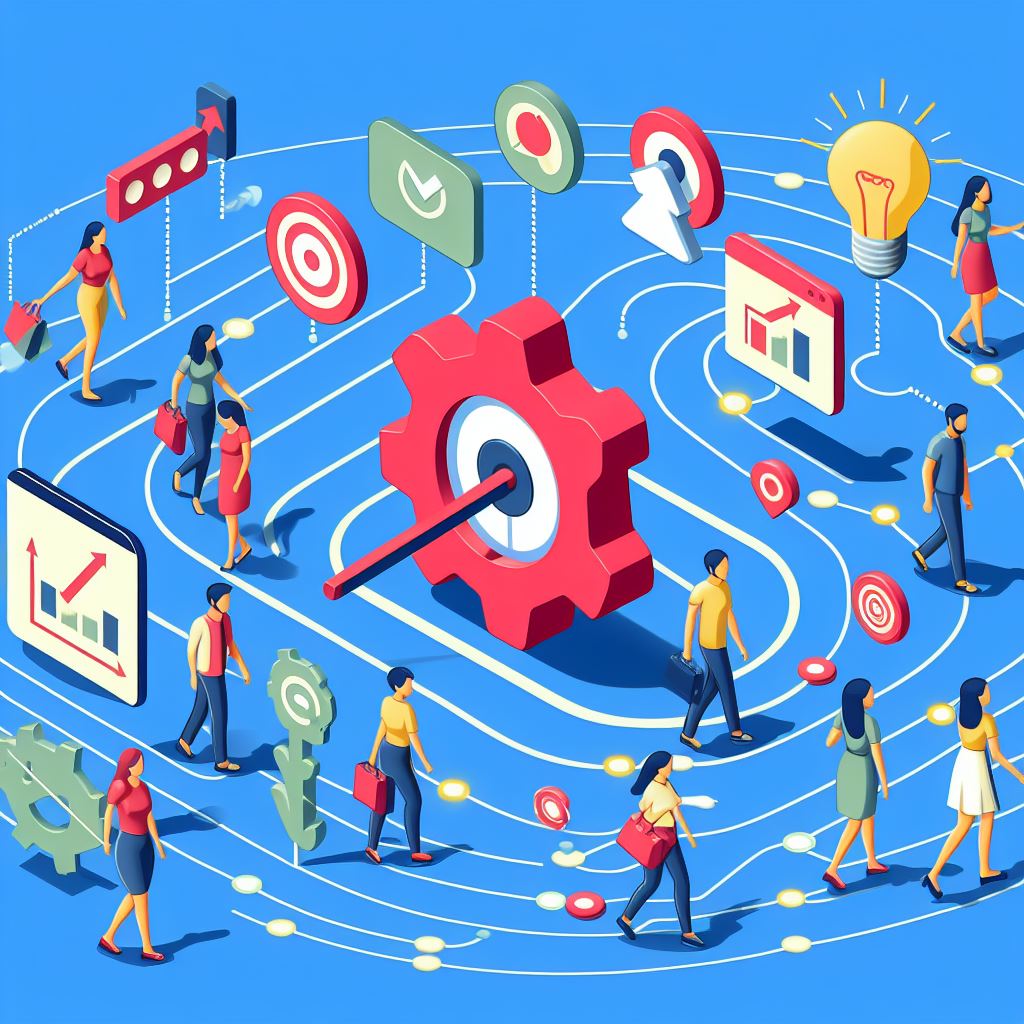Linear Attribution Modeling: Simplifying the Customer Journey
May 6, 2024
Linear Attribution Modeling: In the world of marketing, understanding how your various marketing efforts contribute to conversions (sales, sign-ups, etc.) is crucial. Linear attribution modeling offers a straightforward approach, treating every touchpoint a customer has with your brand as equally important.
Demystifying the Customer Journey with Linear Attribution
Imagine a customer’s journey to purchase as a straight line, with various milestones or interactions (touchpoints) along the way. These touchpoints can include anything from seeing a social media ad to reading a blog post on your website to visiting your physical store.
Linear attribution doesn’t differentiate between the significance of these touchpoints. Instead, it assigns equal credit to each one for a conversion. This approach assumes that every interaction throughout the customer journey plays a role in influencing the final decision.
Benefits of Linear Attribution Modeling

- Simplicity and Ease of Use: Linear attribution is one of the easiest attribution models to understand and implement. There’s no complex data analysis or assigning weights to different touchpoints.
- Holistic View of Marketing Efforts: By giving equal credit to all interactions, linear attribution provides a comprehensive picture of how your overall marketing strategy is working together to drive conversions.
- Identifying Strong and Weak Channels: While individual touchpoints might not be highlighted, linear attribution can reveal which marketing channels (e.g., social media, email marketing) are consistently contributing to conversions throughout the customer journey.
Limitations to Consider
- Oversimplification of Customer Behavior: Linear attribution assumes all touchpoints have equal influence, which might not always be the case. Some interactions might be more critical than others.
- Difficulty in Identifying Key Touchpoints: Since all touchpoints receive equal credit, it can be challenging to pinpoint the specific interactions that significantly impact conversions.
Who Should Use Linear Attribution Modeling?

Linear attribution is a fantastic starting point for businesses that are new to attribution modeling or have simpler marketing campaigns. It’s also beneficial for companies that want a high-level overview of how their overall marketing efforts contribute to conversions, particularly those with limited resources.
Conclusion
While other attribution models offer more granular insights, linear attribution provides a simple and balanced perspective on the customer journey. It can be a valuable tool for understanding the overall effectiveness of your marketing strategy and identifying areas for improvement. However, as your marketing efforts evolve and you require a deeper understanding of customer behavior, you might need to consider adopting a more sophisticated attribution model.
How to implement Linear Attribution in Marketing Strategy?
Implementing it in your marketing strategy is a process with a few key steps. Let’s break it down:
- Define your marketing goals: First, figure out what you want to achieve and which metrics matter most to your business. This will help you focus your efforts and choose the right attribution tool.
- Pick the right attribution tool: There are lots of options out there, so find one that fits your needs. Look for tools that can handle multiple sources of attribution and give you accurate insights into each touchpoint.
- Set custom weighting factors: Linear attribution gives equal weight to each touchpoint, but you can customize this to suit your business. You might want to give a little extra weight to certain channels or interactions that seem more important to your goals.
- Make sure all your data sources are connected: Your attribution tool needs to be able to access data from your CRM, analytics platforms, and marketing automation tools. This ensures that the data it uses is complete and consistent.
- Analyze and improve: Regularly check in on how well your attribution model is working. Look at which touchpoints lead to the most conversions and see if there are any patterns. Use this information to adjust your marketing strategy and improve your results.
- Test and validate: Compare your linear attribution model to other models, like first-touch and last-touch, to make sure it’s accurate. Testing helps you be confident that your model matches up with what’s really going on in your business.
- Keep an eye on things and adjust when needed: Monitor the performance of your marketing channels and make changes if something seems off. This helps you stay on top of your game and keep improving.
Remember, linear attribution provides a simple and balanced view of the customer journey. It’s a great starting point, but don’t be afraid to tweak it as you learn more about what works best for your business
Common Challenges in implementing Linear Attribution

Implementing linear attribution in your marketing strategy can be beneficial, but it also comes with its own set of challenges. Let’s explore some common hurdles and how to overcome them:
- Inability to Observe the Whole Customer Journey:
- Challenge: Linear attribution assumes that every touchpoint contributes equally to the conversion process. However, it may not account for cross-browser journeys or interactions across different devices (e.g., mobile, desktop, tablet).
- Solution: Consider using cross-device tracking tools or integrating data from various sources to get a more comprehensive view of the customer journey.
- Tracking Restrictions and Cookie Use Limitations:
- Challenge: Some tracking restrictions (such as ad blockers) and limitations related to cookies can impact the accuracy of linear attribution. If users block cookies or clear their browsing history, it becomes challenging to track their interactions consistently.
- Solution: Explore alternative tracking methods (e.g., server-side tracking) and ensure compliance with privacy regulations. Additionally, consider using first-party cookies for more reliable data collection.
- Difficulty in Picking the Right Attribution Model:
- Challenge: Linear attribution is just one of several attribution models available. Choosing the right model for your business can be tricky, especially if you’re unsure which one aligns best with your goals.
- Solution: Evaluate your specific business needs, consider the pros and cons of each model, and test different approaches. Remember that no single model fits all scenarios, so be open to adjusting your strategy based on performance.
Remember that while linear attribution provides a balanced perspective, it’s essential to address these challenges to make informed decisions about your marketing efforts. 🚀
Real-World Examples of overcoming Linear Attribution Limitations
Let’s take a look at some real-life scenarios where linear attribution models really shine in marketing:
1. E-Commerce:
When you run an online store, it’s important to know how all your marketing channels work together to bring in sales. Here are some examples of touchpoints in an e-commerce business:
- Content Marketing: Think of helpful blog posts or product guides that educate potential customers and get them interested in your stuff.
- Social Media Ads: Paid promos on platforms like Facebook, Instagram, or Twitter.
- Email Campaigns: Targeted emails sent out to your subscribers.
- PPC Content: Pay-per-click ads on search engines.
With a linear attribution model, each of these touchpoints gets equal credit for contributing to a sale.
2. Multi-Channel Strategies:
For businesses using multiple marketing channels, linear attribution offers a clear way to measure how well they all work together. It gives each touchpoint its fair share of the credit for converting customers into buyers.
Say, for instance, you find that your linear attribution model gives more weight to the touchpoints that really make a difference in getting people to buy stuff. But with other attribution models, those key interactions might get overlooked. Knowing this helps you make smarter decisions about your marketing strategy!
Just remember, while linear attribution has its perks, it does have its limits too. Being aware of both the strengths and weaknesses of this model can help you use it effectively in your marketing plan. 💡
Attribution Modeling: Understanding Its Importance and Types


